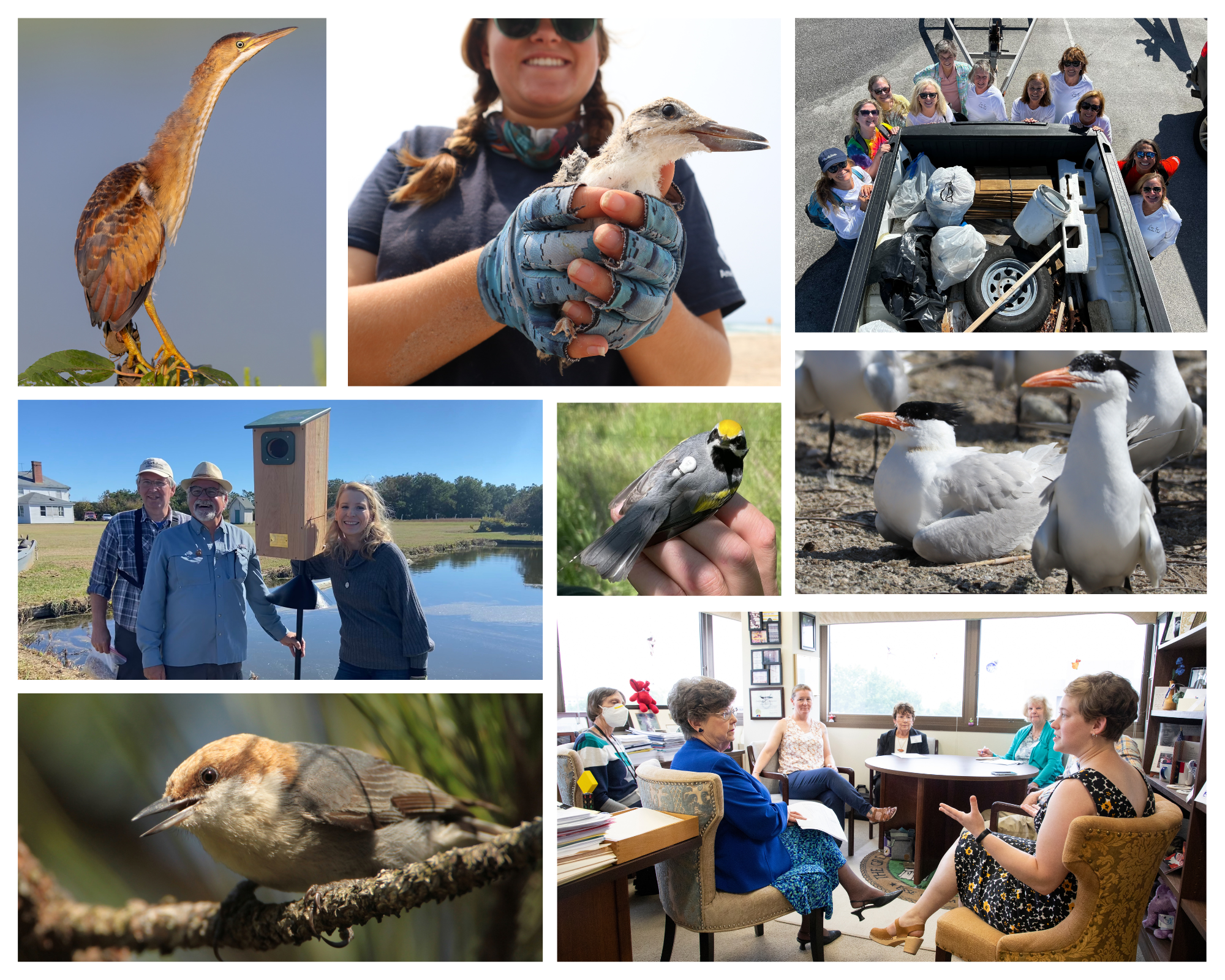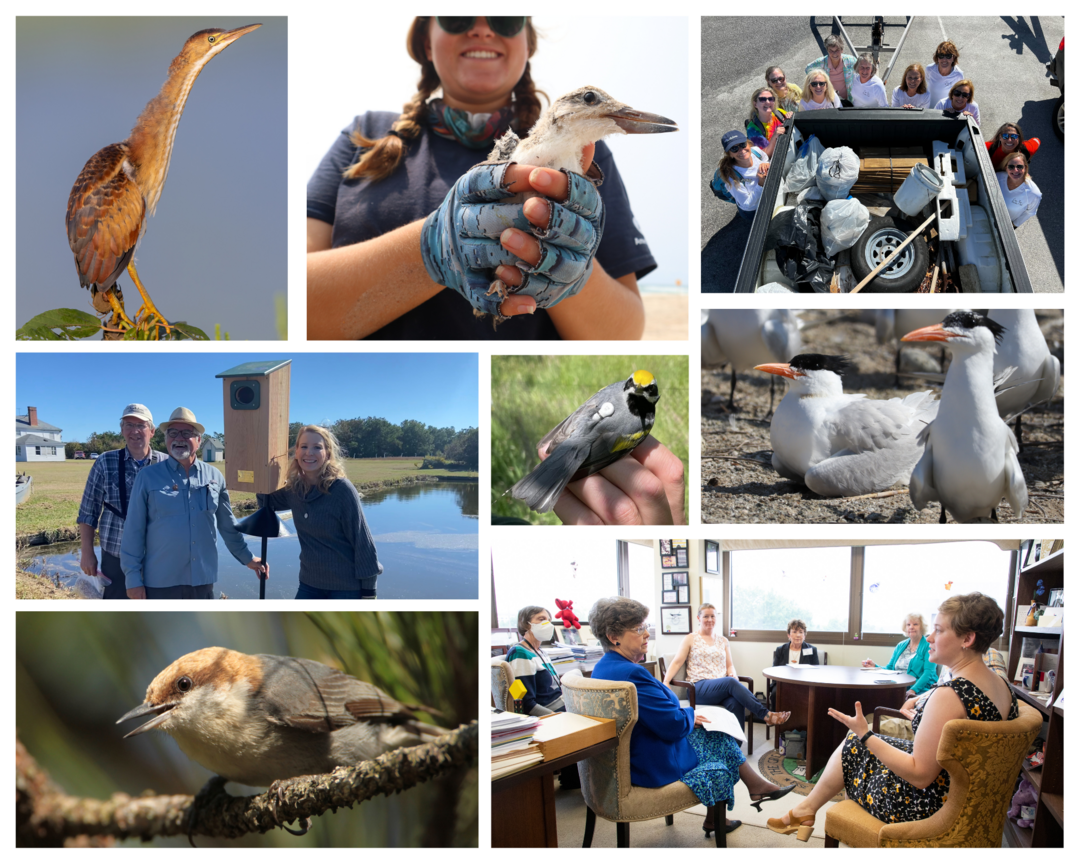From remote nesting sites on the Cape Fear River to the crowded halls of the North Carolina legislature, Audubon staff and chapters rallied to protect birds and the habitats they need to thrive this year.
We launched new projects to better understand the movements and health of vulnerable bird species, advocated for conservation funding and native plants, secured grants for new, ambitious coastal resilience work, and tracked Golden-winged Warblers all the way to South America and back again.
These accomplishments wouldn’t be possible without our chapters, members, and staff who work year-round to protect birds and the places they need. Read on for a recap of the biggest wins for birds in 2023.
We banded thousands of coastal birds to help better understand and protect them
Audubon staff, partners, and volunteers visited nesting colonies across the coast to band thousands of terns, skimmers, and oystercatchers throughout the spring and summer. As part of this effort, we put the first field-readable bands on Royal and Sandwich Terns in the state, which will allow us to gather insights into where and when these birds are moving around the coast.
This work is already paying off in the form of re-sightings later in the summer, including documenting tern chicks from the Cape Fear River dispersing north to NJ, MD, and VA. Banding allows us to monitor important populations and understand how best to prioritize conservation efforts—information that is essential for on-the-ground management projects spearheaded by our coastal team.
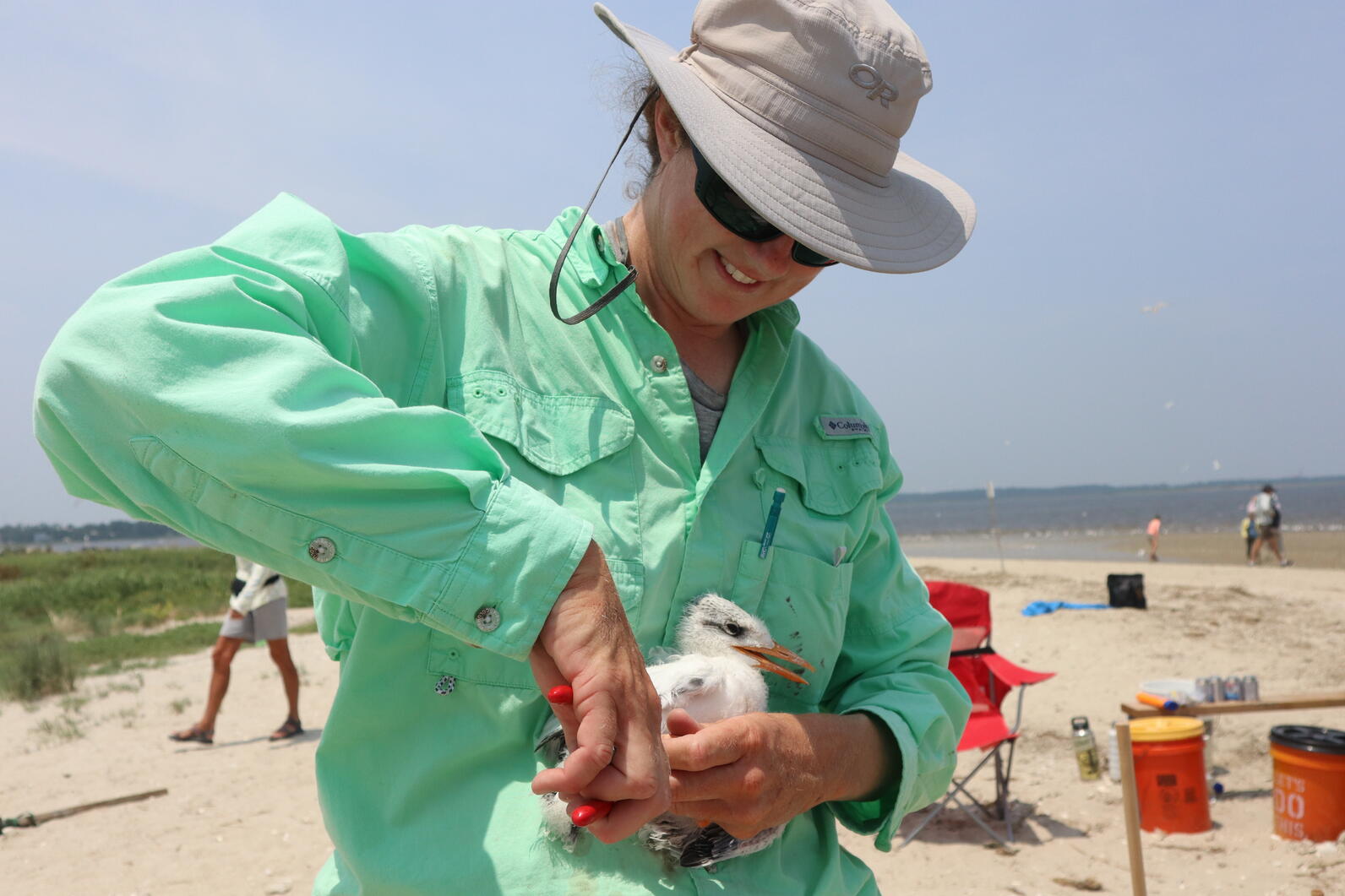
Thanks to advocacy from Audubon members, a new native plants policy and conservation funding increases passed the legislature
This summer, Audubon worked with the NC Department of Cultural and Natural Resources on a new policy requiring the use of native plants at all state parks and historic sites. To further solidify this policy into law, we worked with Senator Bill Rabon to champion legislation requiring the use of native vegetation at state parks, historic sites, and roadways.
Audubon members spoke up for this policy at Advocacy Day and have rallied support from landscapers, nurseries, and garden stores across the state. The policy builds on other recent native plants legislation supported by Audubon. The budget also includes $30 million in 2024 and $28 million in 2025 for the Land and Water Fund, and the same amounts for the Parks and Recreation Trust Fund. This represents a $4-6 million increase in annual funding.
We launched NOAA-funded coastal resilience projects in North Carolina and beyond
What does the industrial city of Gary, Indiana share in common with the rural lowland communities of coastal North Carolina and South Carolina? The answer: flooding, degraded wetlands, and a history of underfunding and other inequitable policies. And, as it turns out, secretive marsh birds like Least Bittern. This year, we received a grant from the National Oceanic and Atmospheric Administration (NOAA) to launch a new suite of climate resilience planning projects in partnership with coastal communities in these states, for the benefit of birds and people. In North Carolina, we’ll be working with community partners in Tyrrell County to co-design nature-based resilience projects that will have dual benefits for birds and people.
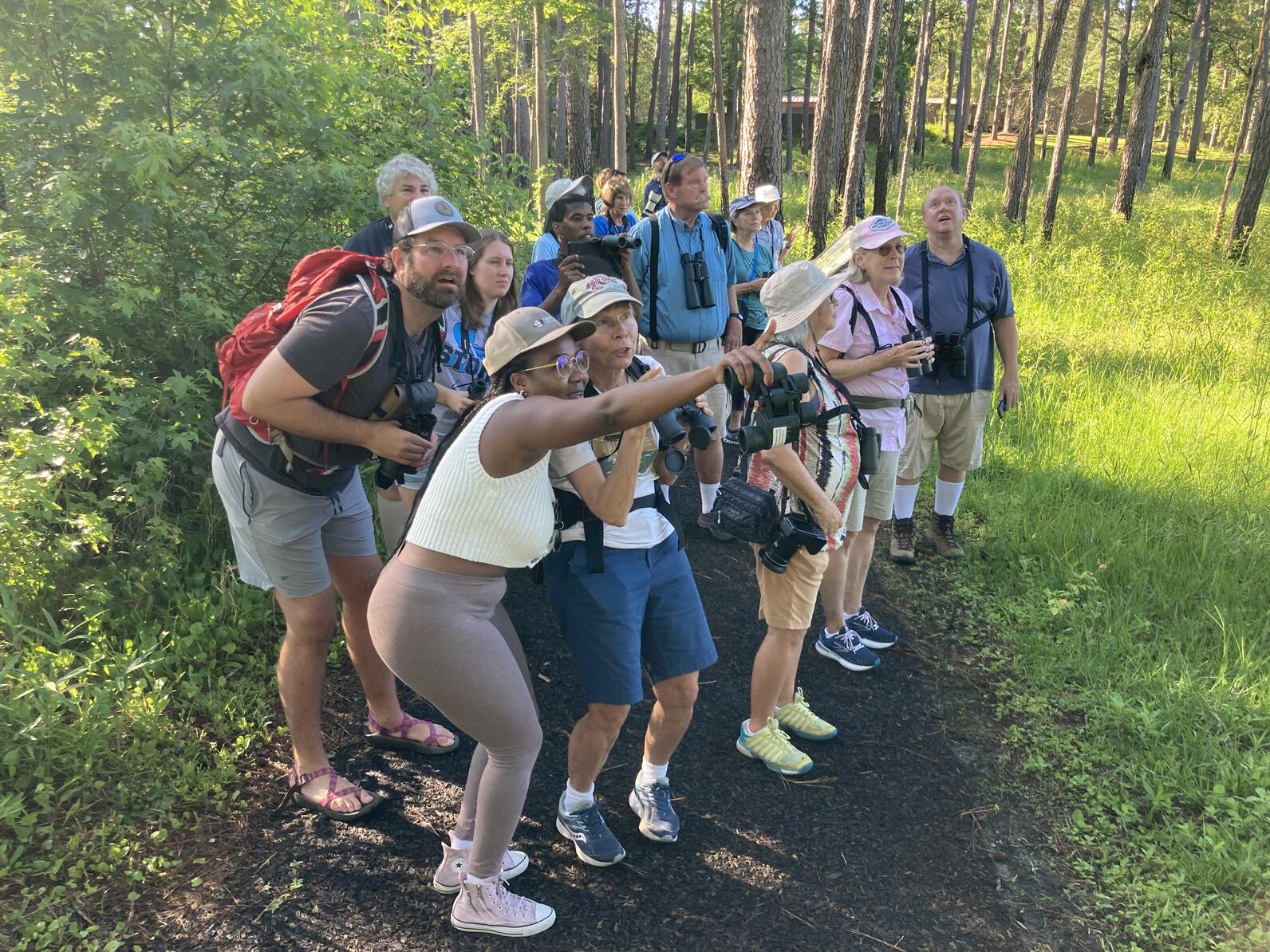
Celebrating 10 years of Bird Friendly Communities
This year, we marked the 10-year anniversary of our Bird Friendly Communities initiative in North Carolina, made possible by the work of our chapters and members across the state. The program has ensured that birds can thrive where most people live—in cities and towns. Along the way, we have engaged communities at all levels to be part of the solution.
All told, Audubon and our chapters have put up 14,000 Brown-headed Nuthatch boxes, launched Lights Out programs in eight cities, created safe roosts for Chimney Swifts in communities across the state, and passed landmark native plants policies and the local and state level. We’re excited to continue moving this essential work forward.
We advanced a series of marsh restoration pilot projects at our Pine Island Sanctuary
The fresh water marshes of Currituck Sound are vital for birds and people alike, but these same wetlands are also facing intense pressure from rising seas and encroaching development. That’s why Audubon is testing methods to protect and rebuild the marsh through a series of pilot projects at our Pine Island Sanctuary.
Thanks to funding from the National Fish and Wildlife Foundation’s National Coastal Resilience Fund, the final design of the projects started to take shape this year, including innovative methods for restoring freshwater marshes in North Carolina. The work is part of a broader Marsh Conservation Plan developed by Audubon and the Currituck Sound Coalition, with the ultimate goal of protecting and reviving marsh habitat in this fast-changing ecosystem while also preparing for the future.
With our partners, Audubon tracked Golden-winged Warblers from North Carolina to South America and back again
We are in the second year of a Golden-winged Warbler tracking project with the NC Wildlife Resource Commission and researcher Dr. Darin J. McNeil of the University of Kentucky, and we’re already getting a closer glimpse into the lifecycle of this declining bird species. Earlier this year, biologists snagged two Golden-wingeds in mist nets in Madison and Yancey Counties—the same individuals that we caught and tagged with a tracking device in the same location last spring.
The ultimate goal is to learn more about how this rare songbird moves across its range, and what threats might be causing its population to dwindle. All the while, we’re continuing to work with private landowners to manage habitat for Golden-winged Warblers.
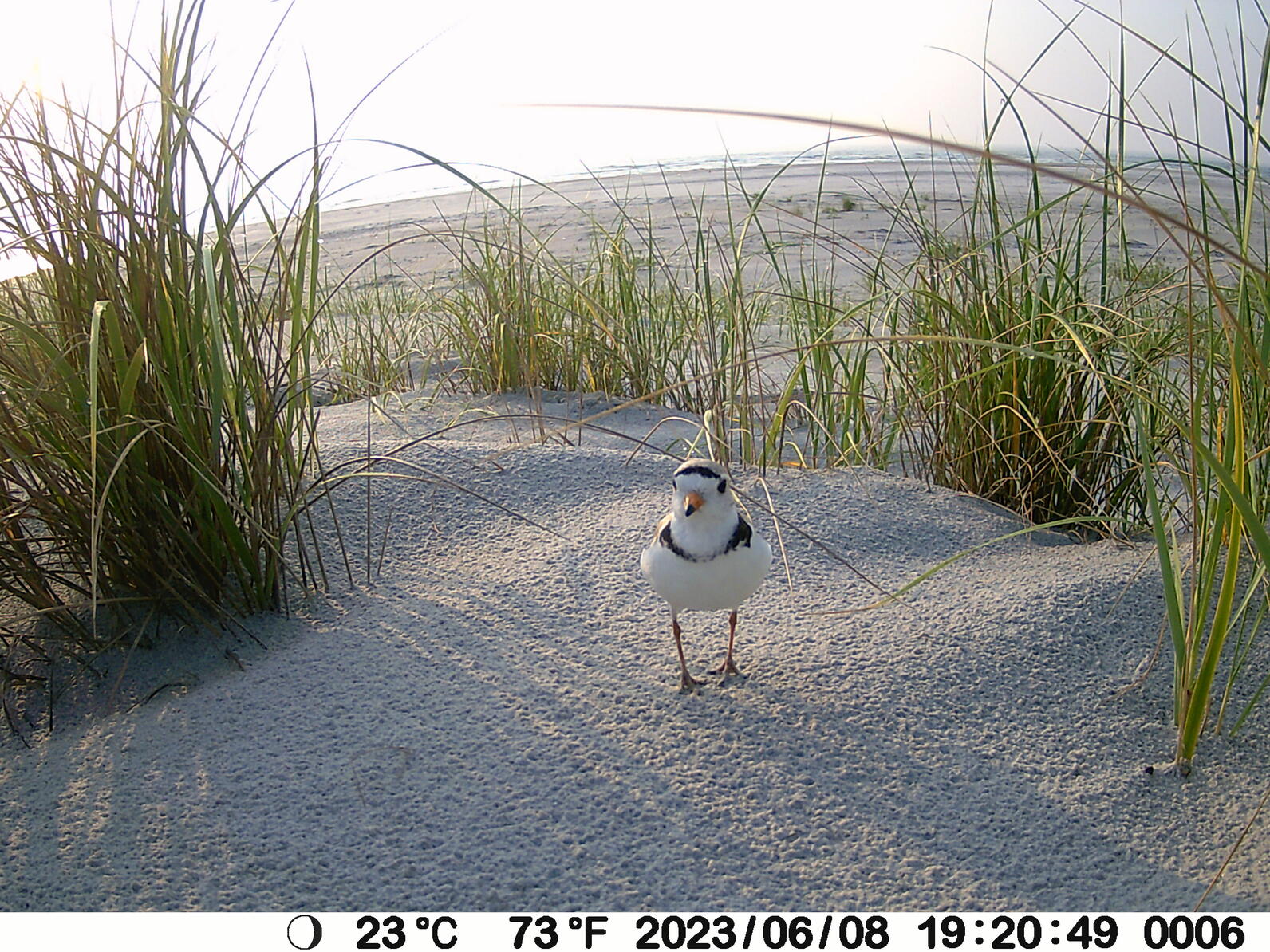
We welcomed the first pair of nesting Piping Plovers in a decade to Lea-Hutaff
Nesting Piping Plovers are most common in North Carolina on the Outer Banks. They are rare further south. But this summer, we welcomed a pair to Audubon’s Lea-Hutaff Island sanctuary, the first Piping Plover nest on this undeveloped barrier island since 2014.
The nest had a lot to contend with—from ghost crabs, grackles, and heat to disturbances from people, dogs, and storms—as our trail camera showed. This is why our coastal team protects and manages sites like this one, so that birds can successfully raise their young.
We rallied our members to support a longer closure window for coastal nesting sanctuaries, and then helped fledge strong numbers of chicks
In the spring, just before nesting season, our members rallied to support a longer closure window for coastal sanctuaries. The North Carolina Wildlife Resources Commission (NCWRC) approved the policy after over 900 Audubon members sent letters in support of it—a previously unheard-of level of support for this kind of rule change, according to the NCWRC. The closure window is now March 1 to Sept. 15 and allows our sanctuaries to provide a safe place for 40 percent of North Carolina’s coastal nesting waterbirds to raise and fledge chicks. We saw positive results from the new closure window this year as our sanctuaries saw strong numbers of baby birds fledge from our sites.
We worked with chapters to make the night skies darker for migrating birds, including a new partnership with a prominent real estate company
Kane Realty Corporation, one of the biggest real estate companies in Raleigh, joined Wake Audubon chapter’s Lights Out Wake initiative. As part of the program, the developer will turn off unnecessary building lights at its commercial buildings during migration season and is asking its tenants to do the same. Raleigh was the first city in North Carolina to join Lights Out, with other municipalities like Matthews, Greensboro, Asheville, Cary, and Chapel Hill building on that momentum.
The Wrightsville Beach Bird Steward program turned ten this year
The 4-acre sanctuary at the south end of Wrightsville Beach is the most accessible and visible site throughout our network of coastal sanctuaries, which makes managing to prevent disturbances during nesting season all the more important. That’s why Volunteer Coordinator Marlene Eader and Coastal Biologist Lindsay Addison developed the Wrightsville Beach Bird Steward program in 2013.
For 10 years, volunteer Bird Stewards have dedicated their time and energy educating the public about coastal birds that nest on the open sand. Along the way, we have built a community of bird lovers who come back year after year to volunteer.

